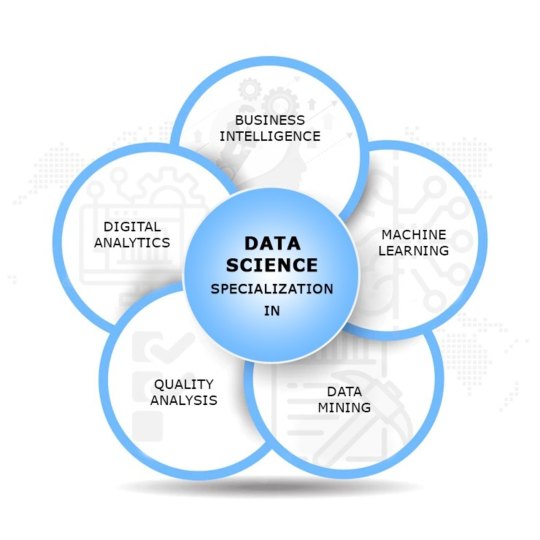Don't wanna be here? Send us removal request.
Text

Data science goes beyond just being a technical field it’s a mindset. It encourages us to ask insightful questions, challenge our assumptions, and build systems that help us learn from our surroundings. As we move into a future where intuition meets automation, the ability to turn data into actionable insights will be what sets leaders apart from followers.
0 notes
Text

If you're searching for an affordable and career-focused Data Analytics course in Noida, Uncodemy is a great option to consider. They offer a comprehensive program that covers tools like Python, SQL, Excel, Tableau, and Power BI, along with real-time projects to build practical skills. What makes Uncodemy stand out is their placement assistance, which includes interview preparation, resume building, and direct job referrals. Their flexible online and offline training options make it easy to learn, no matter your schedule or background.
0 notes
Text

Master the full spectrum of web development—front-end, back-end, and everything in between. Learn to build responsive websites.
0 notes
Text
Learn Data Analytics: Grow Skills, Make it Truth Future

The world inside that's increasingly shaped by information, being able to understand and interpret data isn't just a specialized skill anymore—it's a crucial ability for navigating today’s landscape. At its heart, data analytics involves digging into raw data to uncover meaningful patterns, draw insightful conclusions, and guide decision-making. When individuals get a handle on this discipline, they can turn those raw numbers into actionable insights, paving the way for a more predictable and 'truthful' future for themselves and the organizations they work with. This article dives into the compelling reasons to learn data analytics, highlighting the key skills involved and how they help build a future rooted in verifiable facts.
The Foundational Power of Data Literacy
At the heart of a data-driven future lies data literacy – the ability to read, understand, create, and communicate data as information. This fundamental understanding is the first step towards leveraging analytics effectively. Without it, individuals and businesses risk making decisions based on intuition or outdated information, which can lead to missed opportunities and significant errors.
Understanding Data's Language
Learning data analytics begins with grasping how data is generated and structured. This involves:
Data Sources: Recognizing where data comes from, whether it's from website clicks, sales transactions, sensor readings, or social media interactions.
Data Types: Differentiating between numerical, categorical, textual, and temporal data, as each requires different analytical approaches.
Data Quality: Appreciating the importance of clean, accurate, and complete data. Flawed data inevitably leads to flawed conclusions, rendering efforts useless.
Essential Skills for Data Analytics Growth
To truly make a "truth future" through data, a blend of technical proficiency, analytical thinking, and effective communication is required.
Technical Proficiencies
The journey into data analytics necessitates acquiring specific technical skills:
Statistical Foundations: A solid understanding of statistical concepts (e.g., probability, hypothesis testing, regression) is crucial for interpreting data accurately and building robust models.
Programming Languages: Python and R are the industry standards. They offer powerful libraries for data manipulation, statistical analysis, machine learning, and visualization. Proficiency in at least one of these is non-negotiable.
Database Management: SQL (Structured Query Language) skills are vital for querying, extracting, and managing data from relational databases, which are the backbone of many business operations.
Data Visualization Tools: Tools like Tableau, Power BI, or Qlik Sense enable analysts to transform complex datasets into intuitive charts, graphs, and dashboards, making insights accessible to non-technical audiences.
Analytical Thinking and Problem-Solving
Beyond tools, the analytical mindset is paramount. This involves:
Critical Thinking: The ability to question assumptions, identify biases, and evaluate the validity of data and its interpretations.
Problem Framing: Defining business problems clearly and translating them into analytical questions that can be answered with data.
Pattern Recognition: The knack for identifying trends, correlations, and anomalies within datasets that might not be immediately obvious.
Communication Skills
Even the most profound data insights are useless if they cannot be effectively communicated.
Storytelling with Data: Presenting findings in a compelling narrative that highlights key insights and their implications for decision-making.
Stakeholder Management: Understanding the needs and questions of different audiences (e.g., executives, marketing teams, operations managers) and tailoring presentations accordingly.
Collaboration: Working effectively with cross-functional teams to integrate data insights into broader strategies.
Making the "Truth Future": Applications of Data Analytics
The skills acquired in data analytics empower individuals to build a future grounded in verifiable facts, impacting various domains.
Business Optimization
In the corporate world, data analytics helps to:
Enhance Customer Understanding: By analyzing purchasing habits, Browse behavior, and feedback, businesses can create personalized experiences and targeted marketing campaigns.
Improve Operational Efficiency: Data can reveal bottlenecks in supply chains, optimize resource allocation, and predict equipment failures, leading to significant cost savings.
Drive Strategic Decisions: Whether it's market entry strategies, product development, or pricing models, analytics provides the evidence base for informed choices, reducing risk and increasing profitability.
Personal Empowerment
Data analytics isn't just for corporations; it can profoundly impact individual lives:
Financial Planning: Tracking spending patterns, identifying savings opportunities, and making informed investment decisions.
Health and Wellness: Analyzing fitness tracker data, sleep patterns, and dietary information to make healthier lifestyle choices.
Career Advancement: Understanding job market trends, in-demand skills, and salary benchmarks to strategically plan career moves and upskilling efforts.
Societal Impact
On a broader scale, data analytics contributes to a more 'truthful' and efficient society:
Public Policy: Governments use data to understand demographic shifts, optimize public services (e.g., transportation, healthcare), and allocate resources effectively.
Scientific Discovery: Researchers analyze vast datasets in fields like genomics, astronomy, and climate science to uncover new knowledge and accelerate breakthroughs.
Urban Planning: Cities leverage data from traffic sensors, public transport usage, and environmental monitors to design more sustainable and livable urban environments.
The demand for skilled data analytics professionals continues to grow across the nation, from the vibrant tech hubs to emerging industrial centers. For those looking to gain a comprehensive and practical understanding of this field, pursuing dedicated training is a highly effective path. Many individuals choose programs that offer hands-on experience and cover the latest tools and techniques. For example, a well-regarded Data analytics training course in Noida, along with similar opportunities in Kanpur, Ludhiana, Moradabad, Delhi, and other cities across India, provides the necessary foundation for a successful career. These courses are designed to equip students with the skills required to navigate and contribute to the data-driven landscape.
Conclusion
Learning data analytics goes beyond just picking up technical skills; it’s really about developing a mindset that looks for evidence, values accuracy, and inspires thoughtful action. By honing these vital abilities, people can not only grasp the intricacies of our digital landscape but also play an active role in shaping a future that’s more predictable, efficient, and fundamentally rooted in truth. In a world full of uncertainties, data analytics provides a powerful perspective that helps us find clarity and navigate a more assured path forward
1 note
·
View note
Text

Data Science Rapidly evolving technological landscape, the mastery of data is no longer a niche skill but a fundamental requirement for innovation and progress. The discipline of data science stands at the nexus of mathematics, computer science, and specialized domain knowledge, offering a powerful framework for extracting profound insights from complex datasets.
0 notes
Text

don't be serious my dear friends . i do respect every type of qualification, and job.
0 notes
Text

Turn Data into Smart Choices, and Smart Choices into Success.
2 notes
·
View notes
Text

Learn full stack development with hands-on Java and Python training. Master backend to frontend skills for real-world projects and tech career success.
0 notes
Text

Learn how digital marketing drives online growth through SEO, social media, PPC, and content strategies to boost brand visibility and engagement."
1 note
·
View note
Text

Success in digital marketing doesn’t come overnight. But with the right skills, tools, and mindset, any professional—whether in Noida, Kanpur, or a small town—can make a mark online. As competition grows, those who act now, learn smart, and adapt quickly will lead the race for digital dominance.
1 note
·
View note
Text

Unlock the Power of Data! Dive into the world of insights, patterns, and smart decisions. Whether you're a beginner or a data enthusiast, it's time to turn numbers into knowledge.
💡 Learn the tools. 📈 Understand the trends. 🧠 Make smarter decisions.
Join us and discover how data drives the future!
0 notes
Text

Success in digital marketing isn’t about chasing every trend—it’s about choosing strategies that serve your audience, align with your values, and adapt to change. The marketers who stay data-informed, curious, and authentic will lead the future of the industry.
0 notes
Text

Data Science is the art of extracting insights from structured and unstructured data using tools like Python, R, and SQL. It combines statistics, machine learning, and domain expertise to drive smarter business decisions, improve processes, and predict future trends in industries like healthcare, finance, marketing, and beyond.
1 note
·
View note
Text

From Data to Destiny: Your Science-Powered Future" explores how harnessing data and scientific advancements shapes tomorrow. By transforming insights into innovative solutions, we unlock new possibilities in healthcare, technology, and sustainability, paving the way for a smarter, more sustainable world driven by evidence and discovery.
0 notes


